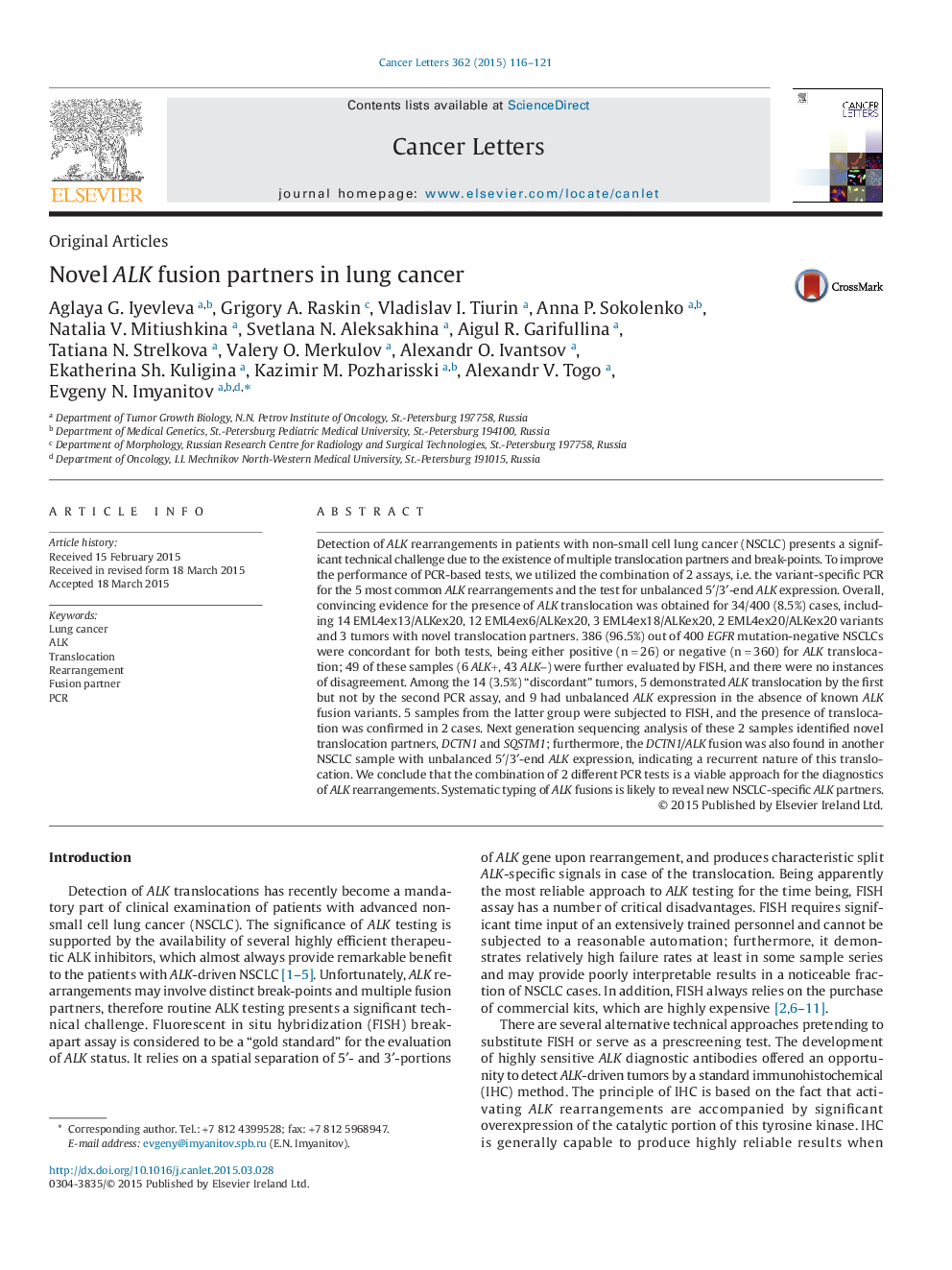| کد مقاله | کد نشریه | سال انتشار | مقاله انگلیسی | نسخه تمام متن |
|---|---|---|---|---|
| 2112484 | 1084388 | 2015 | 6 صفحه PDF | دانلود رایگان |

• Combination of two distinct PCR assays is a highly reliable approach for detection of both known and new ALK translocations.
• Two novel ALK fusion partners, DCTN1 and SQSTM1, have been identified.
• Increased frequency of ALK rearrangements among female patients is attributed to the low prevalence of smoking, not to the gender per se.
Detection of ALK rearrangements in patients with non-small cell lung cancer (NSCLC) presents a significant technical challenge due to the existence of multiple translocation partners and break-points. To improve the performance of PCR-based tests, we utilized the combination of 2 assays, i.e. the variant-specific PCR for the 5 most common ALK rearrangements and the test for unbalanced 5′/3′-end ALK expression. Overall, convincing evidence for the presence of ALK translocation was obtained for 34/400 (8.5%) cases, including 14 EML4ex13/ALKex20, 12 EML4ex6/ALKex20, 3 EML4ex18/ALKex20, 2 EML4ex20/ALKex20 variants and 3 tumors with novel translocation partners. 386 (96.5%) out of 400 EGFR mutation-negative NSCLCs were concordant for both tests, being either positive (n = 26) or negative (n = 360) for ALK translocation; 49 of these samples (6 ALK+, 43 ALK−) were further evaluated by FISH, and there were no instances of disagreement. Among the 14 (3.5%) “discordant” tumors, 5 demonstrated ALK translocation by the first but not by the second PCR assay, and 9 had unbalanced ALK expression in the absence of known ALK fusion variants. 5 samples from the latter group were subjected to FISH, and the presence of translocation was confirmed in 2 cases. Next generation sequencing analysis of these 2 samples identified novel translocation partners, DCTN1 and SQSTM1; furthermore, the DCTN1/ALK fusion was also found in another NSCLC sample with unbalanced 5′/3′-end ALK expression, indicating a recurrent nature of this translocation. We conclude that the combination of 2 different PCR tests is a viable approach for the diagnostics of ALK rearrangements. Systematic typing of ALK fusions is likely to reveal new NSCLC-specific ALK partners.
Journal: Cancer Letters - Volume 362, Issue 1, 28 June 2015, Pages 116–121